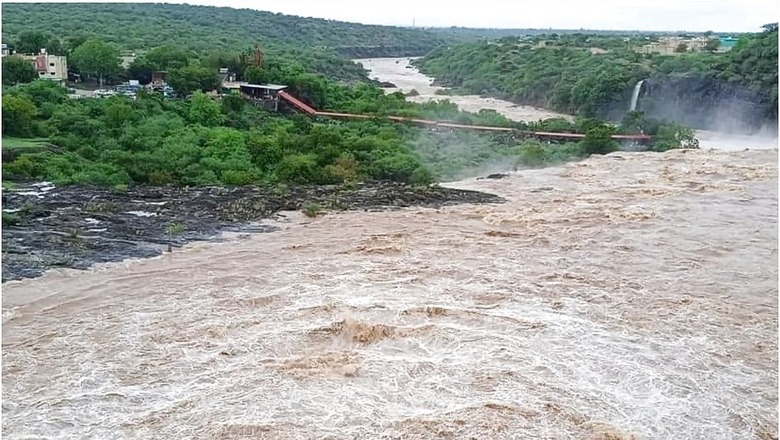
views
Several parts of Gujarat witnessed showers over the weekend with moderate to heavy rain expected to continue this week as well.
State Emergency Centre officials report that rainfall has been recorded in 245 talukas in 33 districts in the last 36 hours. With 164 mm of rain recorded in the last 36 hours, Santalpur taluka of Radhanpur district has received the highest rainfall in the state.
It has rained 10 per cent of Gujarat’s average annual rainfall in just five days. According to data, as of July 10, the state had received 43.80 per cent of its average annual rainfall. In the traditionally arid Kutch region alone, 112.8% of its average annual rainfall has been received this season.
Throughout the state, there has been a significant inflow of water into reservoirs due to incessant rainfall. Around 207 water reservoirs, including the Sardar Sarovar Dam (Narmada Dam), are currently at 47.41 per cent of their total capacity. Among them, 26 reservoirs are overflowing with water.
In light of the prevailing weather conditions, the India Meteorological Department (IMD) has issued a five-day warning for the state starting from July 10.
According to IMD’s weather forecast bulletin, heavy to very heavy rain is forecast for the districts of Gujarat region, in Banaskantha, Patan, Rajkot, Jamnagar, Porbandar, Dwarka, Surendranagar, Morbi, Kutch, Kheda, Ahmedabad, Panchmahal, Vadodara, Bharuch, Surat, Navsari, and Valsad for the coming three days.
The SEOC reports that the talukas of Talod (138 mm) and Idar (134 mm) in Sabarkantha district, Lunawada (127 mm) and Mahisagar (127 mm) in Mahisagar district, Dhansura (104 mm) in Aravalli district, and Visnagar (100 mm) in Mehsana district all received more than 100 mm of rainfall.
Recent rains have accelerated sowing activities across the state. According to sources, over 52 per cent of Gujarat’s total area has already been sown.
According to officials, the Sardar Sarovar Dam has reached 58 per cent of its water capacity as a result of heavy rains in its catchment areas. The intense rains caused roads and markets to flood, making commuting in urban areas challenging. While in rural areas, rivers and dams swelled, flooding low-lying areas, and some villages were also cut off due to heavy rains.
















Comments
0 comment